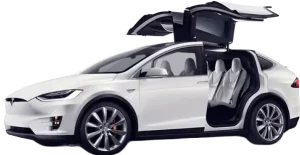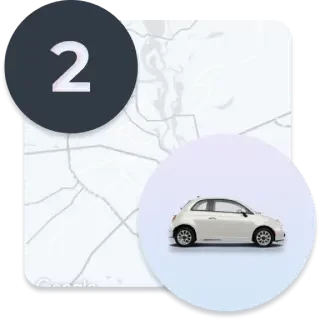Car rental platform with AI power
The ultimate solution for saving or earning on car rentals that benefit both renters and owners





Welcome to an innovative carsharing platform, where we make car rental an experience like never before! By booking with us, you can enjoy any car, at any location, for any period with the terms that best suit you. Our intelligent algorithms ensure that you get the best possible deal on every booking.
We believe that everyone deserves the opportunity to ride in style, which is why we work not only with global brands like Avis, Enterprise, and Hertz, but also with independent car rental agencies and individual owners. This way, we can negotiate the best deals and outstanding offers, allowing you to enjoy the ride of your life without breaking the bank.
Get ready to hit the road with confidence and style. Book with us today, and discover the freedom of driving the car of your dreams.

Best price
Intelligent pricing algorithms ensure renters receive the best rental deal while owners earn a fair profit

Convenience
The user-friendly interface makes it easy to rent a car or start a rental business within a few steps

Safety
A comprehensive car rental agreement eliminates hidden charges for the renter while covering risks for the owner
How it works

- Renter adjusts car rental flexible terms to meet own needs.
- Dynamic pricing instantly determines cost based on market conditions.

- Automated search finds car owners located at the chosen location
- Intelligent selection algorithm peaks the best car based on the search criteria

- Quick confirmation with car details, contact info and credentials.
- Renter signs the agreement and receives the car directly from owner.
PRICING
Experience complete peace of mind with free cancellations, no upfront payments, and no hidden fees for both renters and owners.
Vision
Car rental represents the spirit of adventure and the freedom to explore the world. It’s about empowering individuals to take control of their lives and live without boundaries.
We have a bold vision to revolutionize the car rental industry. We want to create a world where car rental is not only more convenient than car ownership but also more sustainable and profitable for everyone involved.
We believe that our innovative technology and forward-thinking practices will allow us to empower people from all walks of life to easily access and share vehicles, no matter where they are or where they’re going.

Community
We value inclusivity and believe in the power of collective voice to guide us in serving our community.

Privacy
We prioritize the protection of our users’ data by avoiding the sale, misuse, or exposure of their personal information.

Environment
We are committed to promote sustainable car-sharing practices that help reduce our carbon footprint.
FAQ
What is a car rental platform?
A car rental platform is an online system that connects car renters with independent car rental agencies and individual car owners globally.
Is it cheaper to rent a car through a car rental platform?
Yes, renting a car through a car rental platform is usually more cost-effective because of its vast network of car owners and the ability to negotiate better deals for renters.
Can I rent a car for one day on a car rental platform?
Yes, you can rent a car for a single day on a car rental platform. However, short-term rental deals may come at a higher daily rate than long-term rentals.
How far in advance should I book a rental car on a car rental platform?
You can book a car rental on a platform as early as one day before the start of the rental period. However, to ensure availability and get the best rates, it is recommended to book at least one week in advance.
Are there any hidden fees when renting a car on a car rental platform?
No, there are no hidden fees when renting a car on a car rental platform. The final price of the rental will be shown to you before you confirm the booking, and there are no additional charges or surprises.
How this car rental platform is different from others?
The main difference from other car rental platforms is dynamic pricing and automatic car search which helps to get the best deals with less effort.
